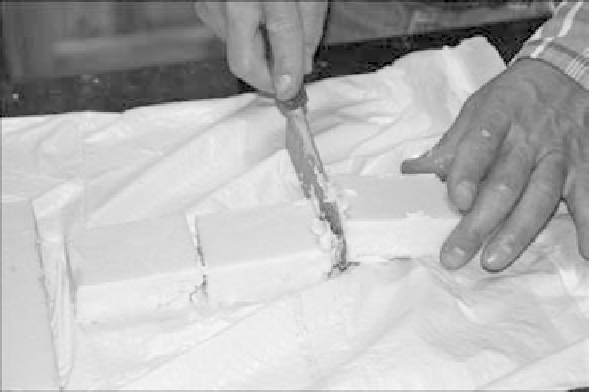Agriculture Reference
In-Depth Information
Make sure to wear gloves again, as the lye could still irritate your skin. Cut bars should be left
out to cure for several weeks before using. Now, the saponification process will happen relatively
quickly, in that 24- to 48-hour window. You might still have some irritation issues if you use it
during that time, so it is safest to wait. On top of that, though, waiting allows any excess water that
might be in the soap to evaporate. The more thoroughly this step happens, the harder and more
resilient your bar of soap will become.
Now the soap can be cut into individual bars. Note that this soap-maker isn't wearing gloves. If the lye is still
active in your soap, gloves are recommended.
(Photo courtesy of Steve Bozak)
On a diFFerent Scale
Rather than starting from scratch, you can purchase “melt and pour” soap at craft stores. It is just a basic
soap to be grated, melted with goat's milk and any other goodies you want to include, then set until firm.
No need to work with lye or wait for saponification!
Creative Soap Making
A simple bar of soap with a good blend of oils and rich, fresh goat's milk will be rich and healthful.
Likely, there will be times when that is all you need. As with all art forms, however, this is not
likely to be the case every time.
A sturdy workhorse soap will only need basic oils and does not necessarily need pretty dyes or
extras like flowers and embellishments. But it may benefit from a refreshing peppermint scent and
some exfoliating properties. A gift soap to pamper someone special might need lavish oils and a
dash of flower petals.















